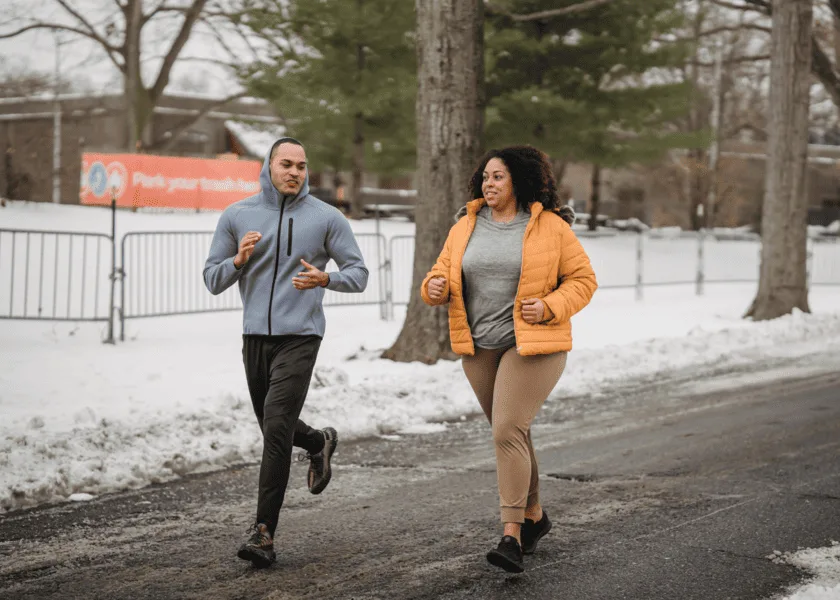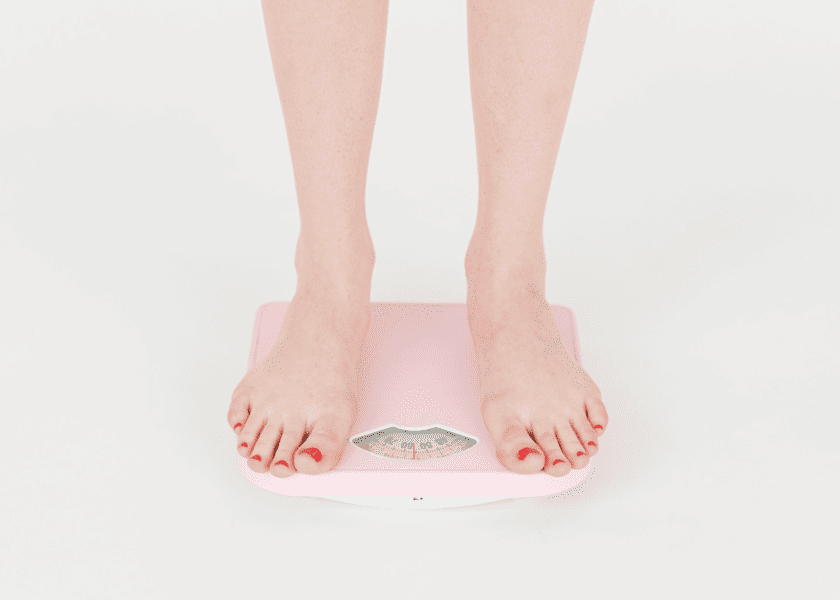Introduction
In today’s fast-paced world, finding time for exercise often feels like an insurmountable challenge. Between demanding work schedules, family commitments, and the occasional need for downtime, carving out an hour—or even 30 minutes—for a workout can seem impossible. It’s no wonder that many of us feel stuck, wanting to prioritize our health but unsure how to fit it into our already overflowing lives.
And yet, the promise of short, impactful workouts offers a glimmer of hope. Could just 10 minutes of exercise a day really make a difference? The answer is a resounding yes. Research shows that even brief bursts of physical activity can contribute to weight loss, improve cardiovascular health, and boost overall well-being. The key lies in consistency, intensity, and the right approach.
The Time Dilemma
One of the most common barriers to exercise is time. Many of us fall into the trap of thinking that if we can’t commit to a full workout session, it’s not worth doing at all. This all-or-nothing mindset can leave us feeling defeated before we even begin. But small, consistent efforts can add up over time. Instead of waiting for the “perfect” moment, why not start with what you have?
The Power of Short Workouts
Short workouts—think high-intensity interval training (HIIT), quick yoga flows, or even brisk walking—can be incredibly effective. Not only do they fit seamlessly into a busy schedule, but they also elevate your heart rate, burn calories, and kickstart your metabolism. Here’s why they work:
- Efficiency: Focused, high-intensity exercises maximize results in minimal time.
- Consistency: Shorter workouts are easier to stick with, helping you build a sustainable habit.
- Versatility: You can do them anywhere, whether at home, in the office, or even during a lunch break.
A Realistic Approach to Weight Loss
When it comes to weight loss, every little bit counts. Ten minutes may not seem like much, but when paired with healthy eating and other lifestyle changes, it can become a powerful tool. The beauty of short workouts lies in their accessibility—they’re a realistic starting point for anyone, regardless of fitness level or experience.
So, if you’ve been waiting for the “right time” to start exercising, why not begin with just 10 minutes today? It’s a small step, but one that can lead to lasting change.
Benefits of 10-minute workouts
When life feels like a whirlwind, finding time to exercise can seem impossible. But what if just 10 minutes a day could make a difference? Short, focused workouts aren’t just a quick fix—they’re a powerful tool to boost your health and build habits that stick. Here’s how.

Boosting metabolism with minimal time
It’s a common myth that you need long, grueling sessions at the gym to see results. In reality, 10-minute workouts can be surprisingly effective at revving up your metabolism. High-intensity interval training (HIIT), for example, combines bursts of intense activity with short rest periods. This approach keeps your body burning calories even after you’ve finished—a phenomenon known as the afterburn effect. Plus, these quick sessions fit seamlessly into even the busiest schedules, making it easier to stay consistent.
Improving consistency and habit-building
One of the biggest hurdles to maintaining an exercise routine is consistency. Long workouts can feel daunting, especially when you’re short on time or energy. But with 10-minute sessions, the barrier to entry is much lower. You’re more likely to show up when the commitment feels manageable, and over time, these small efforts add up. It’s not just about the physical benefits—it’s about creating a habit that becomes second nature. As you build momentum, you’ll find yourself more motivated to tackle longer or more challenging workouts when the time is right.
How 10 Minutes of Exercise Supports Weight Loss
Calorie Burning and Fat Loss
You might wonder: Can just 10 minutes of exercise really make a difference? The answer is a resounding yes. While it may seem minimal, short bursts of activity contribute to calorie burning and fat loss in meaningful ways. Here’s how:
- Boosts metabolism: Even brief exercise sessions elevate your heart rate, increasing energy expenditure both during and after the workout.
- Triggers fat oxidation: High-intensity intervals (like quick sprints or bodyweight circuits) can activate fat-burning mechanisms, especially when done consistently.
- Creates a calorie deficit: Small efforts add up—burning an extra 50–100 calories daily can lead to gradual, sustainable weight loss over time.
Think of it as compound interest for your health. A little today, a little tomorrow—soon, you’ll see the cumulative effect.
Enhancing Overall Physical Activity Levels
Ten minutes may not replace a full gym session, but it bridges the gap between sedentary habits and an active lifestyle. Here’s why it works:
- Builds momentum: Starting small removes the intimidation of long workouts, making it easier to stick with exercise daily.
- Encourages consistency: A manageable routine is more sustainable than sporadic, exhausting efforts that lead to burnout.
- Complements daily movement: Pair it with walking meetings, taking the stairs, or stretching breaks to amplify results.
“The best exercise is the one you actually do. Ten minutes is better than nothing — and it has much more impact than you might think.”
By prioritizing movement—even in bite-sized chunks—you’re training both your body and mind to embrace activity as a natural part of life. No all-or-nothing pressure, just progress.
Best Exercises for a 10-Minute Routine
(Seek professional guidance and respect your individual needs when training. This is only an example.)
High-Intensity Interval Training (HIIT)
If you’re short on time but still want an effective workout, High-Intensity Interval Training (HIIT) is your go-to. This approach alternates short bursts of intense effort with brief recovery periods, maximizing calorie burn and improving cardiovascular fitness in just 10 minutes. Here are a few exercises to include:
- 30 seconds of jumping jacks
- 30 seconds of mountain climbers
- 30 seconds of burpees
- 30 seconds of rest
Repeat the sequence twice for a quick, efficient workout. HIIT not only saves time but also keeps your metabolism elevated long after you finish.

Strength Training
Strength training is excellent for building muscle and boosting metabolism, even in short sessions. You don’t need weights—your body can provide enough resistance. Try this simple routine:
- 1 minute of squats
- 1 minute of push-ups
- 1 minute of lunges
- 1 minute of planks
Repeat the cycle twice. These exercises target multiple muscle groups, ensuring a full-body workout in just 10 minutes.
Bodyweight Exercises
Bodyweight exercises are versatile, require no equipment, and can be done anywhere. They’re perfect for fitting fitness into a busy schedule. Here’s a quick routine:
- 1 minute of jumping jacks
- 1 minute of sit-ups
- 1 minute of tricep dips using a chair
- 1 minute of wall sit
Repeat the sequence twice for a balanced workout that strengthens and tones your body.
Incorporating Movement into Daily Life
Finding time for exercise in a packed schedule can feel impossible, but movement doesn’t have to mean structured workouts. Small, intentional changes to your daily routine can add up, making it easier to stay active without feeling overwhelmed. The key is to seamlessly integrate movement into what you’re already doing. Here’s how you can start.
Small Changes with Big Impacts
It’s easy to underestimate the power of minor tweaks, but these small adjustments can have a significant impact over time. Think of them as building blocks for a more active lifestyle. Here are some ideas to get you started:
- Take the stairs instead of the elevator or escalator, even if it’s just for one floor.
- Park your car farther away from your destination to add a few extra steps to your day.
- Stand or pace while you’re on the phone, whether it’s a work call or catching up with a friend.
- Set a reminder to stretch or walk for 2-3 minutes every hour, especially if you have a desk job.
These changes may seem trivial, but consistency is what makes them powerful. Over time, they can help you feel more energized, improve your posture, and even contribute to weight management.
Examples of Non-Exercise Activity
Not all movement needs to be formal exercise. Non-exercise activity thermogenesis (NEAT) refers to the energy you burn through daily tasks and movements. Here are some practical ways to incorporate more NEAT into your day:
“Every step counts. Movement is not just about the gym—it’s about how you live your life.”
- Walk while you wait: Whether you’re waiting for a meeting to start or your coffee to brew, use that time to move around.
- Clean with purpose: Turn household chores into mini-workouts by adding extra motion, like lunges while vacuuming or squats while picking up items.
- Commute mindfully: If possible, walk or bike part of your commute. If you take public transport, get off a stop early and walk the rest of the way.
- Play with kids or pets: Engaging in active play is a fun way to move more without it feeling like a chore.
These activities not only keep you moving but also make daily life feel more dynamic and enjoyable. The goal is to find opportunities for movement that fit naturally into your routine, so it doesn’t feel like an added burden.
Remember, movement is a form of self-care. It’s not about perfection or adhering to a rigid plan—it’s about finding ways to feel good in your body, no matter how busy life gets.
Building sustainable habits
Setting realistic goals
When it comes to building sustainable habits, setting realistic goals is the cornerstone of success. Many of us fall into the trap of aiming too high too soon, only to feel discouraged when we don’t meet those lofty expectations. Instead, start small. Focus on what you can achieve consistently, even if it feels modest at first. For example, instead of committing to an hour-long workout every day, begin with just 10 minutes. This approach not only makes the habit more manageable but also builds confidence as you see gradual progress.
Here are some tips for setting achievable goals:
- Be specific: Instead of saying, “I want to exercise more,” define exactly what that looks like, such as “I will walk for 15 minutes after dinner.”
- Break it down: Divide larger goals into smaller, actionable steps to avoid overwhelm.
- Align with your lifestyle: Choose goals that fit naturally into your routine, making them easier to maintain.

Staying motivated
Motivation can be fleeting, especially when life gets busy. To stay on track, it’s essential to remind yourself of why you started. Reflect on your deeper reasons for wanting to build these habits—whether it’s to feel healthier, have more energy, or simply to feel proud of your progress. Keeping your “why” front and center can help you push through moments of doubt or fatigue.
Here are a few strategies to keep your motivation alive:
- Celebrate small wins: Acknowledge every step forward, no matter how minor it seems.
- Find accountability: Share your goals with a friend or join a community that shares your aspirations.
- Mix it up: Introduce variety to prevent boredom—try a new activity or adjust your routine.
Tracking progress
Tracking your progress is a powerful tool for building sustainable habits. It allows you to see how far you’ve come and identify patterns that can help you refine your approach. Whether you prefer a digital app or a simple journal, keeping a record of your efforts can provide clarity and motivation along the way.
Consider these tips for effective progress tracking:
- Choose a method that works for you: Some people thrive with detailed spreadsheets, while others prefer a quick daily checklist.
- Focus on consistency, not perfection: Missing a day or two doesn’t mean failure—it’s part of the process.
- Review regularly: Take time to reflect on your progress weekly or monthly to adjust goals as needed.
“What gets measured gets managed.” – Peter Drucker
Conclusion: The Power of Starting Small
Every Journey Begins with a Single Step
You don’t need a grand transformation to make a meaningful change. The smallest actions, repeated consistently, create the most sustainable results. Whether it’s 10 minutes of movement, a mindful breath between tasks, or choosing water over soda—these tiny shifts add up. The key isn’t perfection; it’s showing up, even when progress feels invisible.
Why Small Wins Matter
Starting small isn’t about settling—it’s about building confidence. When you focus on what’s achievable, you:
- Reduce overwhelm by breaking big goals into manageable steps.
- Create momentum—success breeds motivation.
- Develop habits that fit seamlessly into your life, not disrupt it.
“You don’t have to see the whole staircase. Just take the first step.” — Martin Luther King Jr.
Your Invitation to Begin
Today, choose one thing—just one—that feels doable. It could be:
- A 5-minute stretch when you wake up.
- Swapping one processed snack for fruit.
- Setting your phone aside for 10 minutes to breathe.
Remember: This isn’t about speed; it’s about direction. Every step counts, and every effort is worth celebrating.
FAQs: Overcoming Doubts
- Will 10 minutes of exercise really make a difference?
- Absolutely. Research shows even short bursts of activity improve metabolism, mood, and energy. Consistency trumps duration.
- What if I miss a day?
- Progress isn’t linear. Forgive yourself, refocus, and simply begin again. Resilience is the habit that matters most.
You’re capable of more than you think. Start where you are. Trust the process. And most importantly—begin.
Reference:
- Fischetti, F., Pepe, I., Greco, G., Ranieri, M., Poli, L., Cataldi, S., & Vimercati, L. (2024). Ten-Minute Physical Activity Breaks Improve Attention and Executive Functions in Healthcare Workers. Journal of Functional Morphology and Kinesiology, 9(2), 102. https://pmc.ncbi.nlm.nih.gov/articles/PMC11205001/
- Gibala, M. J., Little, J. P., Macdonald, M. J., & Hawley, J. A. (2012). Physiological adaptations to low-volume, high-intensity interval training in health and disease. The Journal of Physiology, 590(5), 1077–1084. https://doi.org/10.1113/jphysiol.2011.224725
- Ahlert, M., et al. (2019). Comparison of epoc and recovery energy expenditure between high-intensity interval training and aerobic exercise in adult runners. Revista Brasileira de Medicina do Esporte, 25(1).
- https://www.scielo.br/j/rbme/a/C8tt9VhdMmkqLxwQzT9BqhL/abstract/?lang=ptGoto, K., Tanaka, K., Ishii, N., Uchida, S., & Takamatsu, K. (2011). A single versus multiple bouts of moderate-intensity exercise for fat metabolism. Clinical Physiology and Functional Imaging, 31(3), 215–220. https://doi.org/10.1111/j.1475-097X.2010.01003.x





























